Thermal break U-Channel curtain wall system
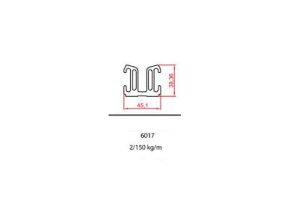
Introduction:
Thermal break U-Channel curtain wall system , In the ever-evolving world of architecture and construction, the demand for energy-efficient building solutions has never been more significant. One area where innovations are making a substantial impact is in the realm of curtain wall systems, with thermal break U-channel systems emerging as a game-changer. These systems offer enhanced thermal performance, structural integrity, and aesthetic appeal, making them a preferred choice for modern sustainable buildings.
Understanding Thermal Break U-Channel Curtain Wall Systems:
A thermal break is a non-conductive material incorporated into the design of a curtain wall to reduce the transfer of thermal energy between the interior and exterior of a building. U-channel curtain wall systems, in particular, employ a U-shaped channel to hold glazing units, providing both structural support and a platform for incorporating thermal break technology.
Benefits of Thermal Break U-Channel Curtain Wall Systems:
- Improved Thermal Efficiency: One of the primary advantages of thermal break U-channel systems is their ability to minimize heat transfer. The incorporation of non-conductive materials, often polyamide or other insulating materials, interrupts the thermal path, reducing the transfer of heat and cold between the building’s interior and exterior. This results in improved energy efficiency, reduced heating and cooling costs, and a more comfortable indoor environment for occupants.
- Structural Integrity: The U-shaped channels in these curtain wall systems provide robust structural support, ensuring the stability and safety of the building envelope. This design allows for the installation of larger and heavier glazing units, promoting expansive and aesthetically pleasing architectural designs without compromising on structural integrity.
- Condensation Control: By minimizing thermal bridging, thermal break U-channel systems help control condensation within the building envelope. Condensation can lead to various issues, including mold growth and degradation of building materials. These systems contribute to maintaining a dry and healthy indoor environment.
- Customization and Aesthetics: U-channel curtain wall systems offer architects and designers a high degree of flexibility in terms of design and aesthetics. The U-shaped channels can be tailored to accommodate various types of glazing, allowing for creative and visually striking façades. This versatility makes these systems suitable for a wide range of architectural styles and project requirements.
- Sustainability: As sustainability becomes a key consideration in modern construction, thermal break U-channel curtain wall systems align with green building practices. The improved energy efficiency contributes to reduced carbon footprints and aligns with the principles of sustainable design and construction.
- Cost-Effective Long-Term Solution: While the initial investment in thermal break U-channel curtain wall systems may be slightly higher than traditional curtain wall options, the long-term benefits often outweigh the upfront costs. The energy savings achieved through improved thermal performance can result in lower operational costs over the lifespan of the building. Additionally, the durability and low maintenance requirements of these systems contribute to their cost-effectiveness in the long run.
- Compliance with Building Codes: As building codes and regulations become more stringent in terms of energy efficiency and sustainability, thermal break U-channel curtain wall systems offer a practical solution to meet and exceed these standards. Architects and builders can confidently choose these systems, knowing that they contribute to compliance with the evolving requirements of green building certifications and energy codes.
- Adaptability to Climate Variations: The thermal break technology in U-channel curtain wall systems makes them adaptable to diverse climatic conditions. Whether in extreme cold or hot climates, these systems help maintain a consistent indoor temperature, ensuring occupant comfort and reducing the reliance on mechanical heating and cooling systems.
- Technological Advancements: Ongoing research and development in materials science and construction technology continue to enhance the performance of thermal break U-channel curtain wall systems. Innovations in insulating materials, coatings, and installation techniques contribute to even higher levels of energy efficiency and durability.
- Case Studies and Success Stories: Numerous projects around the world showcase the successful implementation of thermal break U-channel curtain wall systems. From commercial high-rises to educational institutions and residential buildings, these systems have proven their effectiveness in diverse applications. Exploring case studies and success stories can provide valuable insights into the real-world benefits and performance of these innovative curtain wall solutions.
- Installation Considerations: While thermal break U-channel curtain wall systems offer numerous benefits, proper installation is crucial to realizing their full potential. Working with experienced contractors and installers familiar with the intricacies of these systems ensures that they are installed correctly, maximizing their energy efficiency and structural performance. Attention to detail during the installation process contributes to the long-term success of the curtain wall system.
- Maintenance and Repairs: Another aspect to consider is the maintenance of thermal break U-channel curtain wall systems. While these systems are known for their durability and low maintenance requirements, regular inspections are essential to identify any issues promptly. Addressing minor concerns before they escalate can prolong the life of the curtain wall and prevent more significant problems.
- Integration with Building Systems: Architects and builders should also consider how thermal break U-channel curtain wall systems integrate with other building systems, such as HVAC and lighting. Proper coordination during the design phase ensures that the curtain wall complements the overall building performance, contributing to a holistic and efficient building envelope.
- Educating Stakeholders: As with any innovative building solution, educating all stakeholders involved in a construction project is crucial. This includes architects, contractors, building owners, and occupants. Clear communication about the benefits, proper usage, and maintenance requirements of thermal break U-channel curtain wall systems helps foster a collective understanding of their value and functionality.
- Future Trends and Developments: The field of architectural and construction technology is dynamic, and staying abreast of future trends and developments is essential. Researchers and industry professionals continue to explore new materials, design approaches, and technologies that could further enhance the performance of curtain wall systems. Keeping an eye on these emerging trends can guide architects and builders in making informed decisions about incorporating the latest advancements into their projects.
- Global Adoption and Standards: Thermal break U-channel curtain wall systems are gaining global recognition for their contributions to sustainable construction. As more countries and regions embrace green building practices, the adoption of these systems is likely to increase. Additionally, the establishment of international standards and certifications for thermal break technologies ensures a consistent and reliable approach to energy-efficient building envelopes on a global scale.
- Conclusion: In the dynamic landscape of modern architecture and construction, thermal break U-channel curtain wall systems stand out as a versatile and sustainable solution. Their ability to combine thermal efficiency, structural integrity, and aesthetic appeal makes them an attractive choice for a wide range of projects. As the construction industry continues to prioritize energy efficiency and sustainability, these innovative curtain wall systems are poised to play a central role in shaping the future of building design and construction.
- Real-World Examples: Examining real-world examples of buildings that have successfully implemented thermal break U-channel curtain wall systems provides tangible evidence of their effectiveness. Notable projects, such as LEED-certified office buildings, eco-friendly educational institutions, and sustainable residential complexes, showcase the practical application and positive impact of these systems on both energy consumption and overall building performance.
- User Experience and Comfort: Beyond technical specifications, the user experience and comfort within a building are crucial considerations. Thermal break U-channel curtain wall systems contribute to a more comfortable indoor environment by maintaining stable temperatures and minimizing drafts. This not only enhances the well-being of occupants but also adds to the overall quality and desirability of the constructed space.
- Challenges and Considerations: While thermal break U-channel curtain wall systems offer numerous benefits, it’s essential to acknowledge potential challenges and considerations. These may include initial cost considerations, the need for skilled installers, and ensuring proper coordination with other building systems. Addressing these challenges proactively allows for a more informed decision-making process during the planning and construction phases.
- Global Impact on Sustainability Goals: As nations worldwide commit to ambitious sustainability goals, the adoption of energy-efficient building solutions becomes integral to achieving these objectives. Thermal break U-channel curtain wall systems, with their positive impact on energy consumption and environmental sustainability, contribute significantly to the global effort to create greener, more sustainable built environments.
- Collaboration and Industry Partnerships: The successful integration of thermal break U-channel curtain wall systems often involves collaboration among architects, engineers, manufacturers, and contractors. Industry partnerships can lead to the development of innovative solutions, continuous improvements in technology, and the establishment of best practices for the effective implementation of these systems.
- Feedback Loop and Continuous Improvement: The feedback loop between stakeholders, including architects, builders, and occupants, is crucial for the ongoing improvement of thermal break U-channel curtain wall systems. Learning from real-world experiences, gathering feedback on performance, and implementing continuous improvements contribute to the refinement and evolution of these systems over time.
Conclusion: In conclusion, thermal break U-channel curtain wall systems represent more than just a technological innovation—they embody a holistic approach to sustainable and efficient building design. As the construction industry continues to evolve, these systems play a pivotal role in shaping the future of architecture. By addressing challenges, embracing collaboration, and prioritizing user experience, the global adoption of thermal break U-channel curtain wall systems contributes to the creation of buildings that are not only visually striking but also environmentally responsible and energy-efficient. As we look toward the future, these systems will undoubtedly remain at the forefront of sustainable construction practices, leaving a lasting impact on the buildings we inhabit and the planet we share , Thermal break U-Channel curtain wall system.
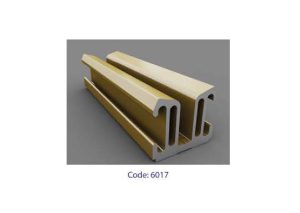

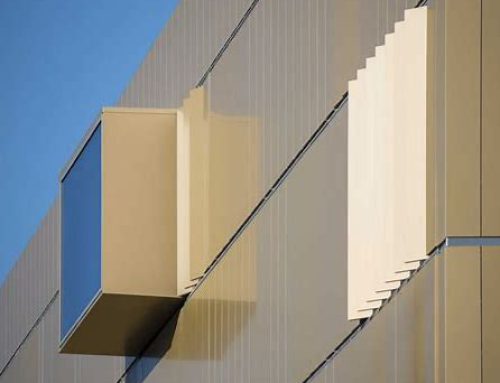

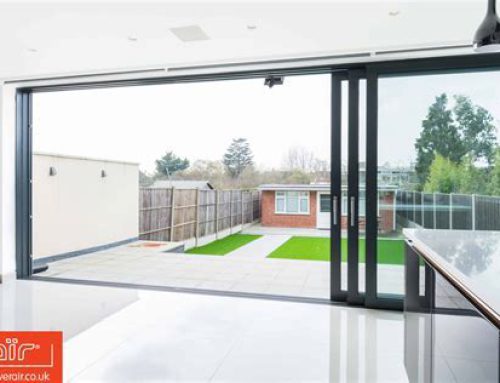
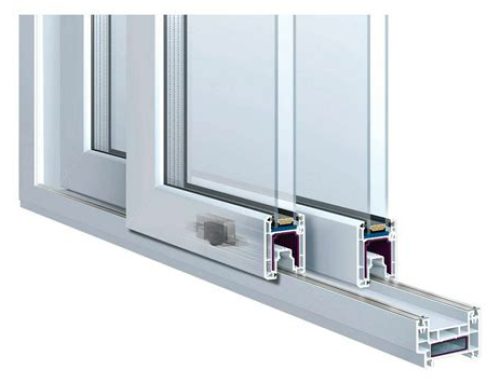
Leave A Comment